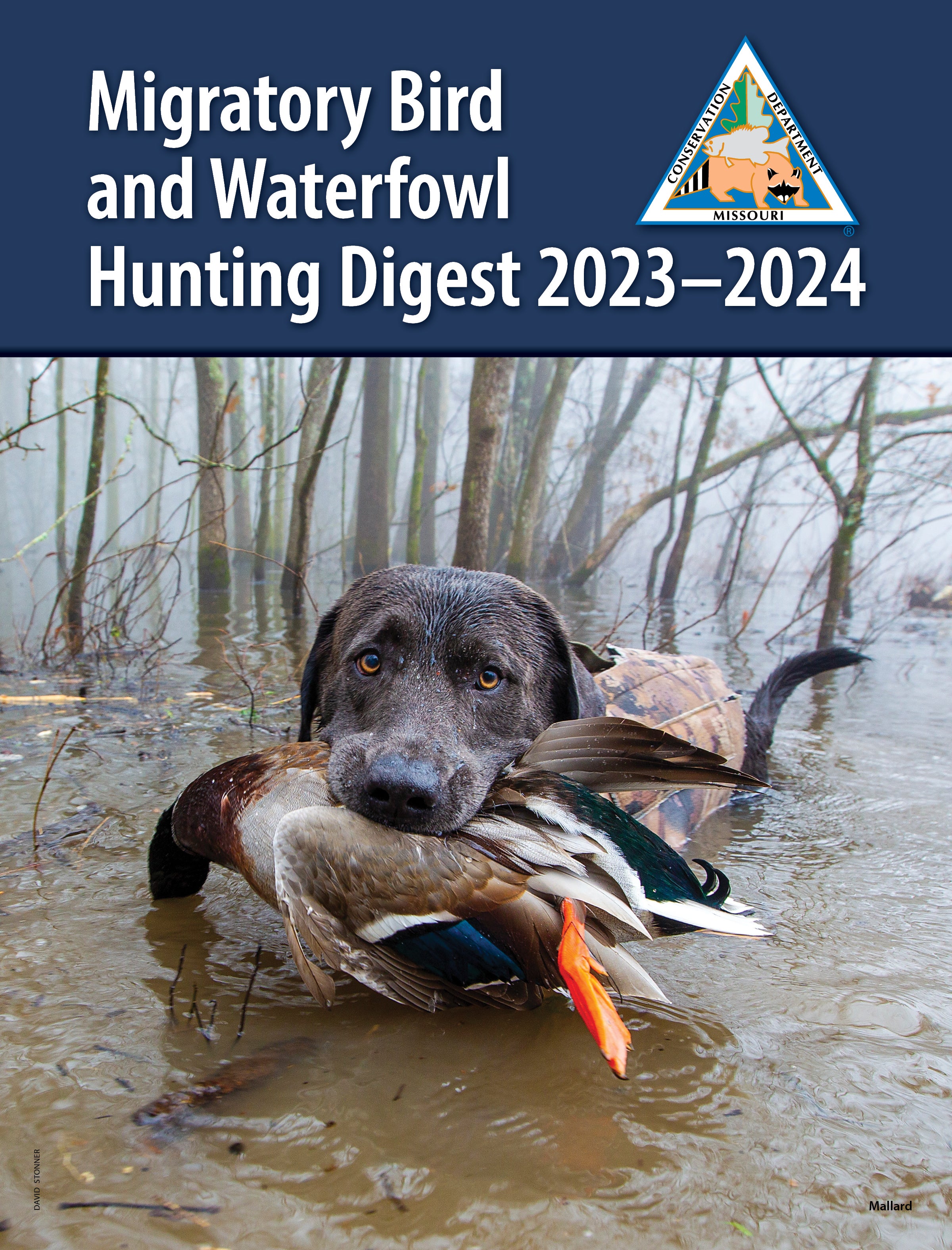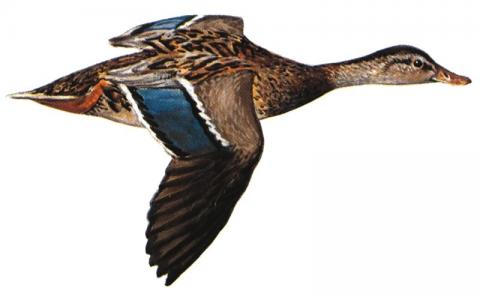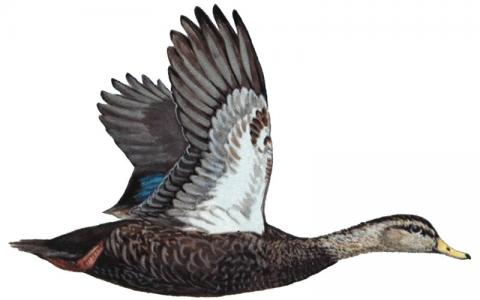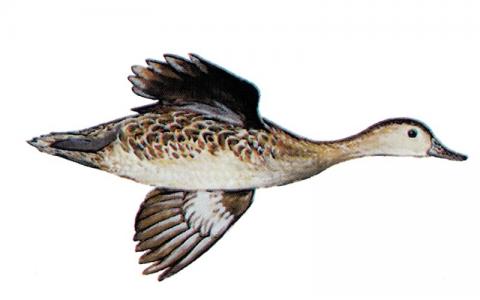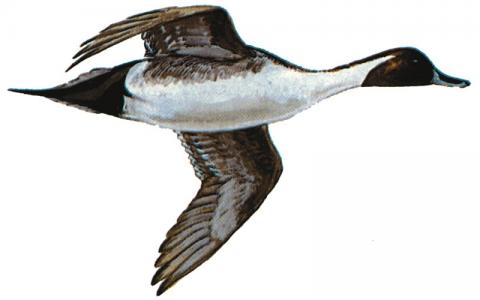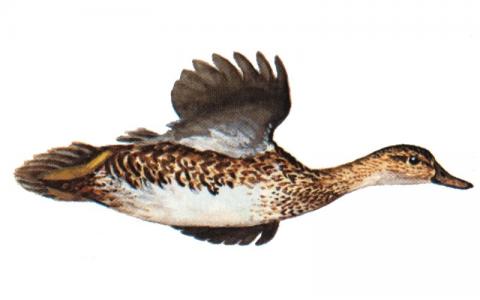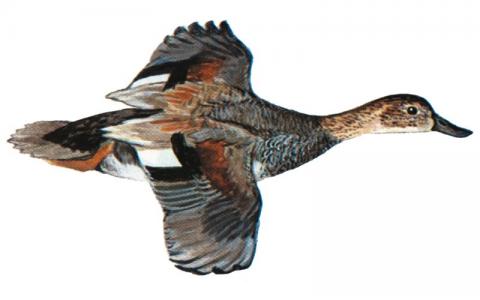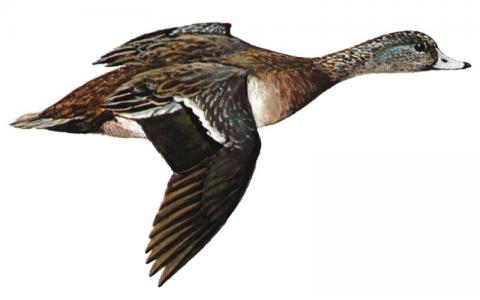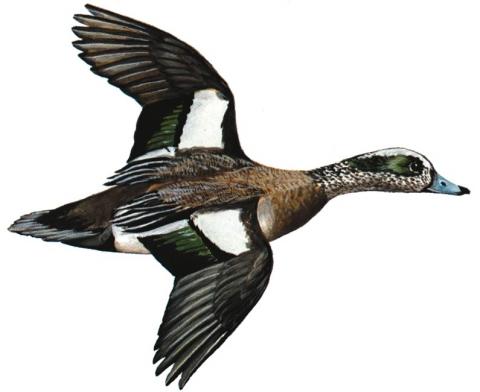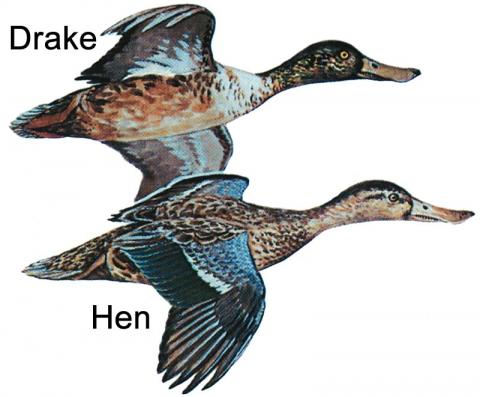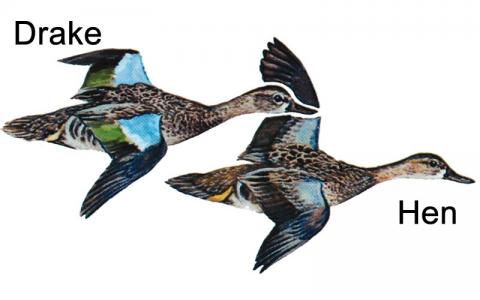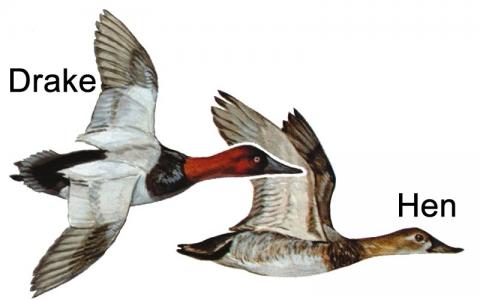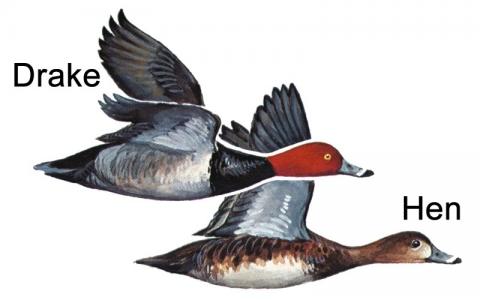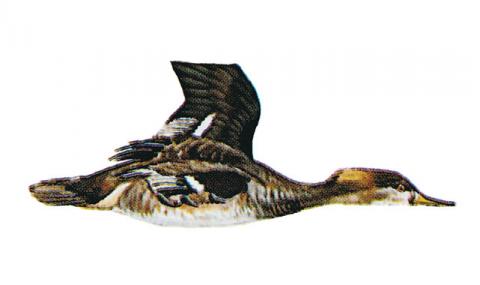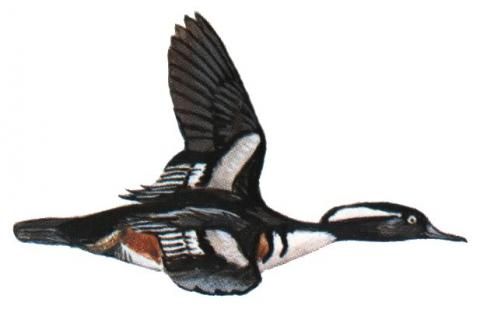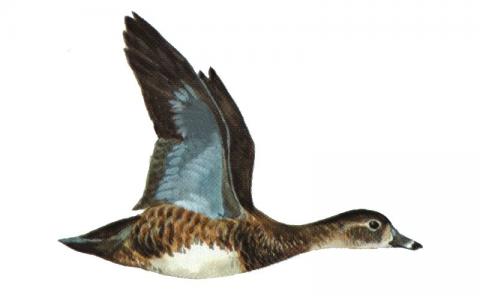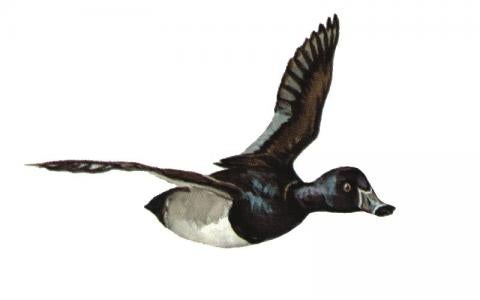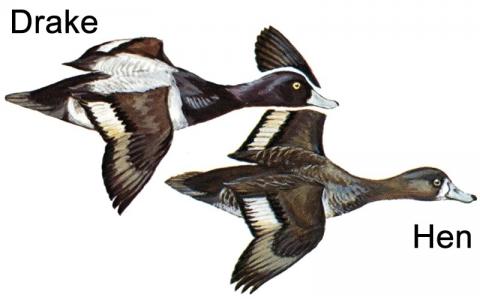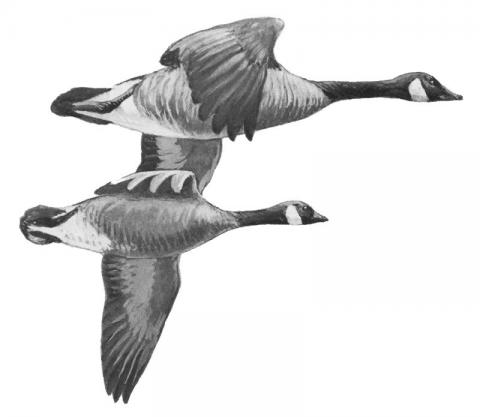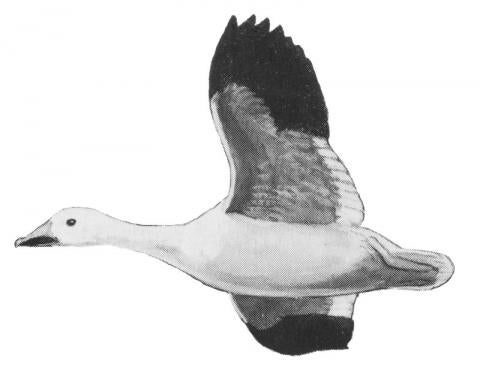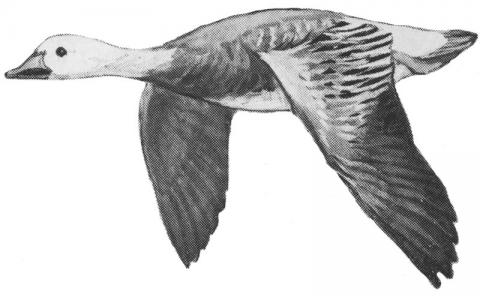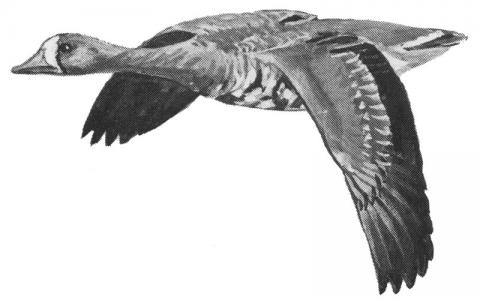Learn to identify waterfowl species using sight, flight patterns, the habitat you’re hunting, and time of year. The species of duck should be known before you target the species with your gun.
Identify your target as a legal waterfowl species before putting your finger on the trigger.
Mallard
Mallards, or "greenheads," are Missouri's most common duck. Hens have a loud quack; drakes give a lower-pitched kwek-kwek.
Mallard hen
- Blue speculum bordered with white
- Mottled brown body
- Orange bill
Mallard drake
- Blue speculum bordered with white
- Iridescent green head
- Dark brown breast
American Black Duck
Male and female black ducks are similar in size, flight, voice, and coloration to mallard hens. To avoid confusion, look for the white underwing and the green-tinted bill.
American black duck drake
- Dark body contrasts with white underwing
- Green-tinted bill
Northern Pintail
These slender ducks fly fast and often zigzag from great heights before leveling off to land. They may be seen in flocks with mallards. Drakes whistle; hens give a coarse quack.
Pintail hen
- Long, pointed wings
Pintail drake
- Long, slender white neck
- Pointed tail
Gadwall
These early migrants fly in small, compact flocks. They are the only dabbling duck with a white speculum. Note, however, that wigeon drakes have white shoulder patches.
Gadwall hen
- Brown body
Gadwall drake
- Gray body
- Black tail
- White speculum
American Wigeon
The green eyestripe and white belly and shoulder patch helps identify wigeon drakes. Hens are generally brown. Both sexes have stubby bills and slightly pointed tails.
American wigeon hen
- Slightly pointed tail
- Stubby bill
American wigeon drake
- Green eyestripe
- White shoulder patch
Wood Duck
The drake wood duck is Missouri's most colorful duck. While flying, their wings make a rustling, swishing sound. Drakes call hoo-w-ett, often in flight; hens give a wailing cr-r-ekk when frightened.
Wood duck hen
Wood duck drake
- Long square tail
- Blocky head
Northern Shoveler
The large spoon-shaped bill helps identify this duck. Shovelers often form mixed flocks with blue-winged teal. Both species have pale-blue shoulder patches, but shovelers are larger.
Drake
- Large, shovel-shaped bill
- Pale-blue shoulder patch
Hen
- Large, shovel-shaped bill
- Pale-blue shoulder patch
Blue-winged Teal
These swift-flying early migrants are normally far south of Missouri by the time the regular waterfowl season opens. However, a few stragglers may show up throughout the fall.
Drake
- Small size
- Pale-blue shoulder patch
Hen
- Small size
- Pale-blue shoulder patch
Green-winged Teal
Green-winged teal are North America's smallest duck. Their size, rapid flight, and iridescent-green wing patches help identify these ducks.
Green-winged teal hen
- Small size
Green-winged teal drake
- Small size
- Iridescent-green speculum
Canvasback
The swiftest of all ducks, the canvasback has a rapid and noisy wingbeat. The bill, lighter coloration, and large size distinguish this duck from the similar-looking redhead.
Drake
- Large, light-colored body
- Forehead slopes to long, black bill
Hen
- Large, light-colored body
Redhead
Redheads are most often confused with canvasbacks, but in flight they also look similar to ringnecks and scaup. Note the steep forehead and short, bluish-gray bill.
Drake
- Steep forehead
Hen
- Bluish-gray bill
Hooded Merganser
The rapid wing strokes of hooded mergansers give the impression of great speed. Mergansers are often seen in pairs or very small flocks.
Hooded merganser hen
Hooded merganser drake
- Pointed bill
- Thin white crest
- White on trailing edge of wing
Ring-necked Duck (Ringneck)
This diver can be confused with scaup and redheads. In flight, the dark wings of ringnecks are different from the white-edged wings of scaup. The bold white ring at the tip of the bill is usually conspicuous.
Ring-necked hen
- Bold white ring at tip of bill
Ring-necked drake
- Dark wings without white edges
- Black head
Greater and Lesser Scaup
Except for the wings, greater and lesser scaup appear almost identical in the field. The white band near the trailing edges of the wings runs almost to the wing tip in greater scaup, but only halfway in the lesser. Do not confuse scaup with the similar-looking ring-necked duck.
Drake
- White-edged wings
- Black head
Hen
- White at the base of the bill
Canada Goose
Canada geese are often called "honkers" because of their distinctive call. The black head and neck, white cheek patch, and brownish-gray body are distinctive.
Characteristics
- Black head, bill, and neck
- Brownish-gray body
- White cheek patch
Snow Goose and Ross's Goose
Snow geese have two color phases: white and blue. Ross's geese appear nearly identical to snow geese, but have a shorter bill with no "grin patch."
White phase
- Short white neck
- Gray bill forms "grin patch" where upper and lower portions meet
- Black tips on white wings
- White body
Blue phase
- White head and neck
- Brown back
- Breast color varies from dark gray to white
Greater White-fronted Goose
White-fronted geese, or "speckle-bellies," fly in V-shaped flocks. Their call is a laugh-like series of high-pitched paired notes.
Note: immature white-fronted geese and immature snow geese appear similar. Immature white-fronted geese have pink bills, orange legs, and black tails. Immature snow geese have gray bills, gray legs, and white tails.
Characteristics
- Pink bill with white base
- Brown back
- White underparts with dark patches






















